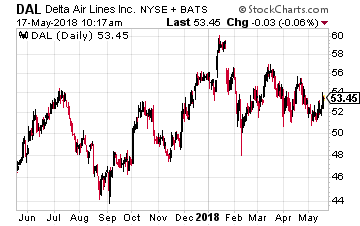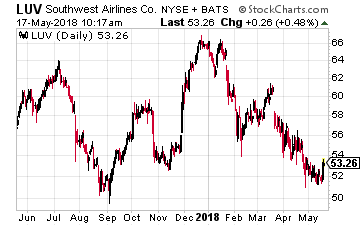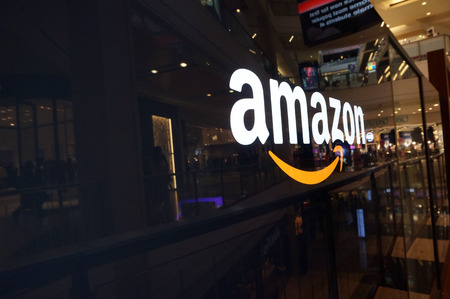It’s little more than a “glorified Excel spreadsheet.”
At least that’s how New York University Stern School of Business economist Nouriel Roubini described blockchain technology earlier this month during a panel discussion at the Milken Institute Global Conference in Beverly Hills, Calif.
But Roubini, nicknamed “Dr. Doom” for predicting the 2008 financial crisis, wasn’t done there. In fact, he’s been claiming for months now that the technology, which undergirds Bitcoin and cryptocurrencies as an online transaction ledger, is overhyped.
“There is no decentralization,” the notoriously liberal Keynesian economist went on to say. “It’s just bullsh-t.”
Now, I’m not going to stoop to Roubini’s level and use foul language.
Instead, I’ll just give him a new nickname: “Mr. Wrong.”
Truth is, Mr. Wrong and other blockchain naysayers couldn’t be more incorrect.
Blockchain is still in its infancy, but that means now is the best time for investors to jump in. According to Gartner, the value of blockchain could surpass $1 trillion over the next decade.
So, today I’m going to show you some cold, hard facts to prove that Roubini is, indeed, Mr. Wrong.
And then I’ll introduce you to three global industry leaders that are already using blockchain tech to improve their businesses.
I often brag about my 30-plus years spent kicking around the tech industry and Silicon Valley.
Stunning: New Innovation Will Be Like “Adding Twin Turbos to the Bitcoin Engine” – and Could Send Its Price to $100,000. Learn More…
But that’s nothing compared to these three companies and their total 215 years of experience and a combined market cap of $580.06 billion.
So I’ll take their word before I do that of a former Clinton administration official…
So, peer-to-peer cryptocurrency transactions are perfect for exactly this type of scenario, where they can reduce costs and cut out the middleman.
Simply put, blockchain tech provides a secure way to exchange valuable digital assets on the Internet, without the need for a third party, like a bank or another large company, to mediate the transaction. It also ensures the information these digital assets contain can’t be tampered with, thus producing an “immutable ledger” of transaction data.
And beyond the international payments realm, blockchain is already improving the way a variety of industries use their technical infrastructure, from supply-chain logistics to insurance to healthcare.
So, today let’s look at three global firms that are investing in and using blockchain… upending the way entrenched industries conduct business… and remaining relevant in a rapidly evolving tech landscape.
The moves these three global blockchain leaders are making now are setting them up to take full advantage of what this tech has to offer.
They’re poised to reap the rewards.
And now, so are you.
So let’s take a look…
Global Blockchain Leader No. 1: Blue Is Betting Big
IBM Corp. (NYSE: IBM) has bet big on blockchain – and the company’s leaders see it as vital to its future success.
That said, IBM remains a poor investment. The company’s legacy businesses are slowing down faster than its strategic initiatives are growing. Moreover, its leadership is unfocused and neglectful toward shareholders.
But Big Blue’s work on blockchain tech is pretty much unparalleled at this point in corporate America. And that makes it an interesting company to watch and see who it partners with in the blockchain space, as some of its startup partners are likely to become great investment opportunities in the near future.
According to Google Patents, IBM has 3.9% of the “blockchain” patents filed with the U.S. Patent and Trademark Office. That’s more than any other company.
Most People Don’t Know This About Bitcoin: A systems upgrade expected any day now could send Bitcoin to $100,000. Go here to see why Bitcoin’s not dead… and how it could make you millions.
The firm has developed an industry reputation as the go-to blockchain tech provider, according to an enterprise survey by Juniper. It has more than 250 active blockchain projects and 1,500 dedicated employees.
IBM has done pioneering work with private, enterprise-focused blockchain solutions for banking, insurance, and retail companies that want to use the technology to improve the way they, for instance, store customer data, but not broadcast that information to the general public.
IBM is partnering with the likes of Dole Food Co. Inc., Nestle SA, and Walmart Inc. (NYSE: WMT) to improve the quality of the food supply by tracing it using blockchain tech. It’s working with A.P. Moller-Maersk Group to build out a blockchain solution for the shipping industry. And it’s teaming up with international insurance broker Marsh & McLennan Cos. Inc. on a blockchain project to certify whether contractors have the needed liability insurance coverage.
Those examples are really just the tip of the iceberg, so we’ll be watching what steps IBM takes going forward – and to see if any of its blockchain startup partners become investible.
Global Blockchain Leader No. 2: Charging In
Mastercard Inc. (NYSE: MA), has been diving into blockchain at a furious pace. According to Google Patents, it has 3.2% of the blockchain patents filed with the Patent Office.
That amounts to as many as 30 patent filings over the past year or so, according to an analysis by crypto news site Cointelegraph.
This might seem like an odd position to take for the firm, in light of public statements from CEO Ajay Banga, who has joined Mr. Wrong in labeling cryptocurrencies in general as “junk.”
However, consider this…
Mastercard and other big financial companies act as middlemen in transactions, scooping up fees every time someone uses a credit card… or makes a cross-border payment.
Given that cryptocurrencies’ decentralized, peer-to-peer format represents a threat, Mastercard likely sees the potential of blockchain tech to improve its business processes, including as a means to safeguard identity data.
The market for cross-border payments alone was $18.5 trillion in 2017, so expect much more experimentation and use of blockchain tech in this industry.
In April, Mastercard filed for a patent for a system to use a semiprivate or private blockchain to store identity data, including names, street addresses, and tax identification numbers. This innovation, if it works out, could provide a way to store this data without fear of manipulation or fabrication, as well as accurately verify the data whenever that is needed.
Mastercard also wants to patent a blockchain-based, business-to-business payments system, which it announced last November. The idea is to create a more transparent way of making and tracking payments, though payments through the system are still made in fiat currencies such as U.S. dollars, not cryptocurrencies.
The company is also trying to snap up the best and brightest crypto professionals to join its team. In April, Mastercard posted “help wanted” ads for 175 new blockchain developers and other specialists in Ireland.
Global Blockchain Leader No. 3: Making Food Safer
Frank Yiannas, the vice president in charge of food safety at Walmart Inc. has not been a blockchain believer since Day 1.
A self-described early sceptic, Yiannas has since changed his mind – and it has to do with transparency in food production.
“For me… it’s more like a religious conversion,” Yiannas told the audience at MIT Technology Review‘s recent Business of Blockchain conference. “The more I got into blockchain, the more I thought this is the solution.”
Now, he’s helped the retail giant as it’s teamed up with nine leading food companies, including Dole, Driscoll’s Inc., and Nestle, in a pilot with IBM to use cloud-based blockchain tech to track food’s origins and what happens to it as it passes through the supply chain.
The importance of this project hit home following an outbreak of E. coli-tainted romaine lettuce that’s led to 53 infections in 16 U.S. states over recent days.
The Centers for Disease Control and Prevention (CDC) is struggling to pinpoint the outbreak’s origins – and Yiannas says blockchain could help.
The current system of tracing any random food’s origins – one among the 50,000-odd foodstuffs stocked on an average grocery store’s shelves – can take a week or more, Yiannas says. With blockchain tech, it takes 2.2 seconds.
No wonder Walmart is actively signing up suppliers to put information about food on a blockchain.
Walmart is also making moves to patent specific blockchain technologies.
In March, the company submitted an application for a patent involving a “Smart Package” system designed for autonomous vehicles and unmanned drones to track package contents, environmental conditions, location, and other information.
Exposing Mr. Wrong
Unlike Mr. Wrong, these three companies clearly see value and market advantage in getting in early on blockchain.
I’m right there with them.
In fact, I’m doing more than putting my money where my mouth is.
I’m currently advising my daughter to consider a career in blockchain as she enters graduate school. No doubt, understanding how this technology works would set her up for some outstanding opportunities.
Of course, I’m also interested in setting you up for the future, too.
Can a $10 Bill Really Fund Your Retirement? The digital currency markets are delivering profits unlike anything we’ve ever seen. 23 recently doubled in a single week. And some like DubaiCoin have jumped as much as 8,200X in value in 18 months. It’ unprecedented... but you won’t receive any of the rewards unless you put a little money in the game. Find out how $10 could make you rich HERE.
Source:
Money Morning













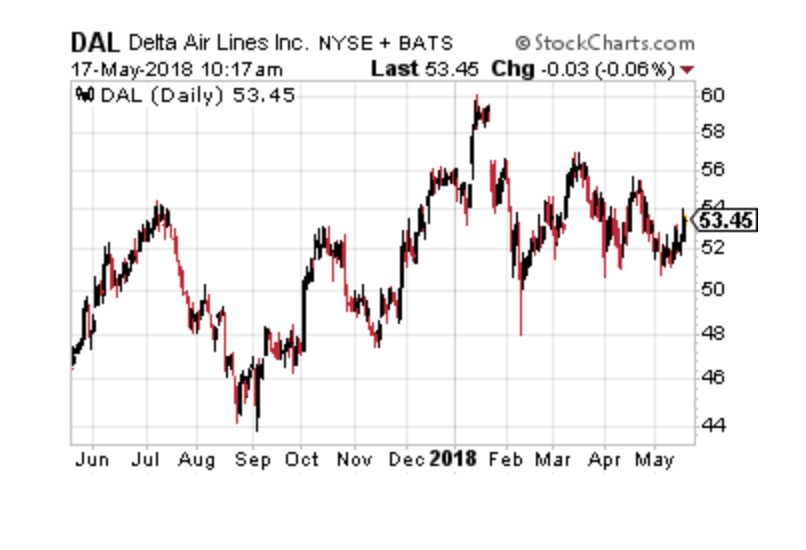
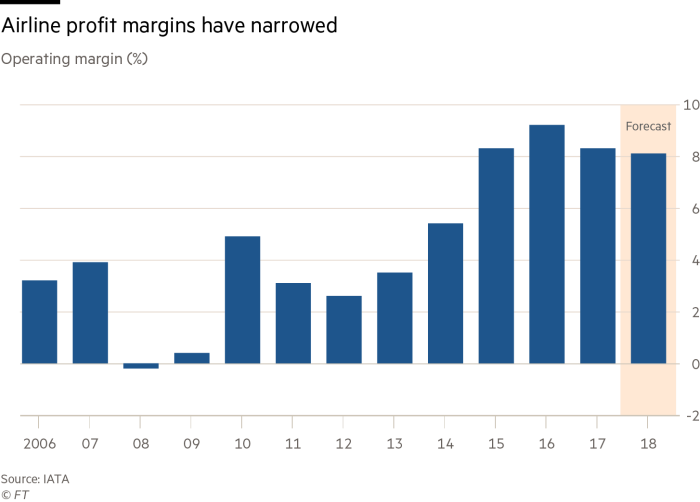
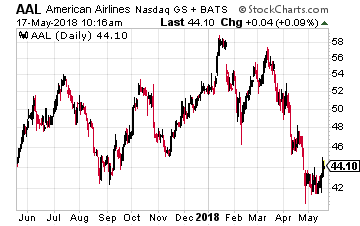 So the industry is seeking to personalize experiences for as many travelers as possible by using the vast amount of data the airlines have on their passengers. And think about it – the airlines do have a lot of data about you – name, address, phone numbers, birth date, credit cards, favorite seating assignment, how often you visited their website, etc. In fact, some researchers say that an average transatlantic flight generates about 1,000 gigabytes of data!
So the industry is seeking to personalize experiences for as many travelers as possible by using the vast amount of data the airlines have on their passengers. And think about it – the airlines do have a lot of data about you – name, address, phone numbers, birth date, credit cards, favorite seating assignment, how often you visited their website, etc. In fact, some researchers say that an average transatlantic flight generates about 1,000 gigabytes of data!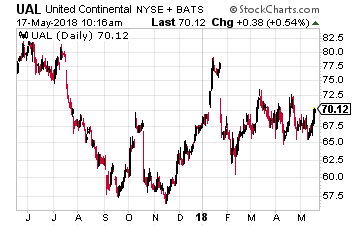
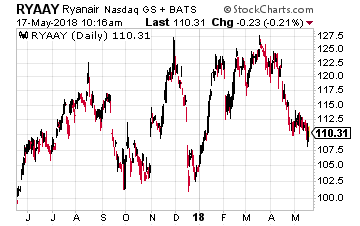 Even overseas-based airlines are going ‘all in’ on big data and deep learning. Ryanair Holdings PLC (OTC: RYAAY) wants to become the “Amazon for travel” by using its customers’ data to cross-sell items, such as hotel rooms, from a one-stop-shop platform.
Even overseas-based airlines are going ‘all in’ on big data and deep learning. Ryanair Holdings PLC (OTC: RYAAY) wants to become the “Amazon for travel” by using its customers’ data to cross-sell items, such as hotel rooms, from a one-stop-shop platform.